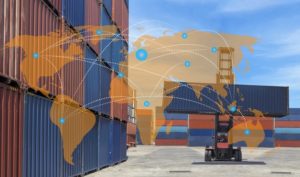
Restoring Supply Chains, Reducing Waste Via Explainable AI

via Shutterstock
The problem is wasteful supply chains clogged with excess inventory and defective parts. The goal is creating “perfect flow” for manufacturers and retailers to reduce waste running into the hundreds-of-billions dollars annually.
Part of the solution, according to supply chain analytics specialist Noodle.ai, is its “FlowOps” platform, an emerging category of business software that helps manufacturers and retailers cope with logistics volatility and complexity.
FlowOps uses explainable AI to detect and anticipate supply chain disruptions, then recommend work-arounds to optimize manufacturing and distribution channels. The platform provides early warnings of impending supply issues, a Bayesian analysis tool to determine possible causes and a recommendation engine designed to maintain and tune manufacturing and product workflows.
The supply-chain waste problem is measured in trillions of dollars annually, along with industrial waste on a similar scale, according to Stephen Pratt, Noodle.ai’s co-founder and CEO. The FlowOps platform is aimed at the estimated $440 billion in excess inventory in 2019 and $860 billion in defective parts that don’t meet manufacturing standards. Pratt argues that static resource planning tools can’t cope with supply chain disruptions that have grown worse during the pandemic.
The San Francisco-based company has invested more than $100 million over the last five years in developing its FlowOps software. “We’re seeing tremendous disruptions and seemingly unpredictable events and seemingly random things that are happening in supply chains that are causing disruptions,” Pratt noted.
The startup and is its growing customer list of retailers and manufacturers are using the tool to restore not only product workflows by also cash and “team flow,” a reference to how resource planners keep supply chains humming.
For manufacturers, the platform also seeks to streamline asset and quality workflows. “Manufacturing defects are not random, they are predictable,” Pratt told Datanami. “The problem is using static systems” unable to anticipate factory or inventory disruptions.
Noodle.ai’s platform leverages explainable AI to anticipate problems and reduce waste in the form of faulty components, excess inventory and underutilized distribution capacity. For example, Pratt reckons half of available space on long-haul trucks is unused. Carriers often make return trips with empty trucks.
Hence, the shelf may be empty when looking for your favorite consumer product.
The FlowOps platform starts with a Sentinel early warning system that leverages three years of times-series data, feeding it into long short-term memory models to help detect disruptions. A demand flow engine helps with inventory forecasting.
On the back end, a recommendation engine dubbed Pathfinder gleans insights from the early warning system, then provides inventory planners with options for re-routing inventory through different parts of their supply chains.
While demand still outpaced supply last year, recommendation systems are promoted as improving allocation of available inventory.
For manufacturing, the AI-based platform recommends strategies for improving the flow of goods from raw materials to factories to retailers’ shelves, the company said.
Another challenge in managing dynamic supply chains is growing inventory complexity in the form of new product SKUs, or stock keeping units, used to track inventory and gauge sales. Pratt noted that some retailers handle up to 100,000 SKUs.
Food distribution is a prime example of how the pandemic disrupted supply chains. Consumers brands reacted by shrinking their product portfolios to maximize the quantities they could ship to customers. “Agility was critical [because] demand vastly exceeded our ability to supply,” George Chumakov, vice president of customer service and logistics at Kellogg Co. (NYSE: K), noted during a Noodle.ai-sponsored forum. “We sacrificed service because we basically sold our inventory.”
Noodle.ai’s Pratt estimated supply chain volatility last year resulted in about $129 billion in unfilled orders for consumer products.
“Without this technology that could prioritize and augment human intelligence” in the earliest days of the pandemic, supply chain disruptions “could’ve been much worse,” added Jay Koganti, Estee Lauder’s (NYSE: EL) vice president for supply chain.
The timing of Noodle.ai’s FlowOps upgrade is propitious given the heightened focus on reinforcing vulnerable global supply chains. The Biden administration, for example, issued an executive order in February declaring: “The United States needs resilient, diverse and secure supply chains to ensure our economic prosperity and national security.”
Noodle.ai’s FlowOps platform falls roughly within the growing Internet of Things analytics market that ABI Research estimates will grow to $10.6 billion by 2026. The largest public cloud vendors along with SAS and C3.ai currently dominate the IoT market, but the market tracker said Noodle.ai along with DataRobot and Dataiku are making headway.
“The IoT Edge advanced analytics market is essentially operationalized [machine learning] and AI products and services targeted at operational technology teams to understand and extract insights,” said Kateryna Dubrova, a research analyst at ABI Research.
Machine learning and AI frameworks “are also enabling advanced analytics in the cloud, where algorithmic models—predictive, prescriptive, correlations—are deployed on pre-processed and organized data sets,” Dubrova added.
Recent items:
Three Ways AI is Shaping the Supply Chain
Reliable Supply Chain Data is Hard to Come By
One Model to Rule Them All: Transformer Networks Usher in AI 2.0, Forrester Says




























